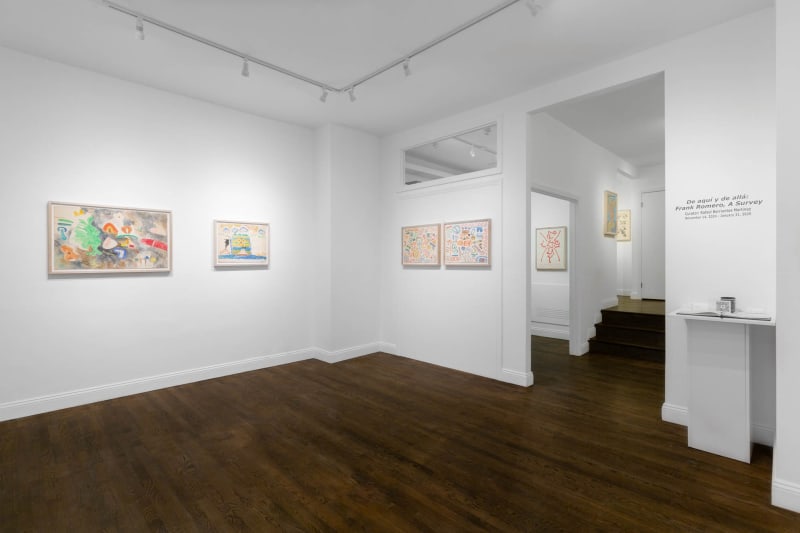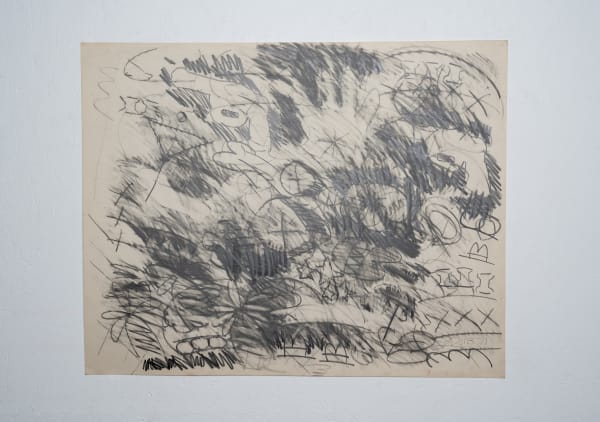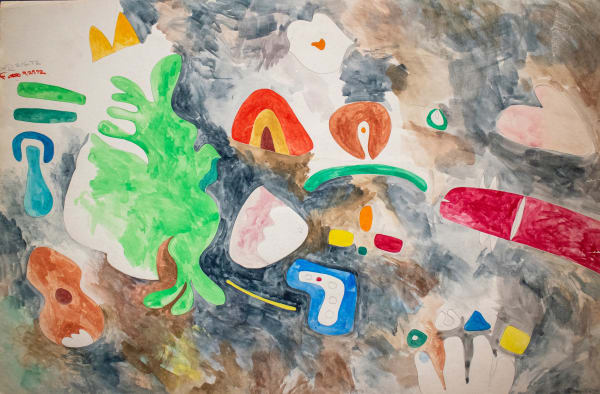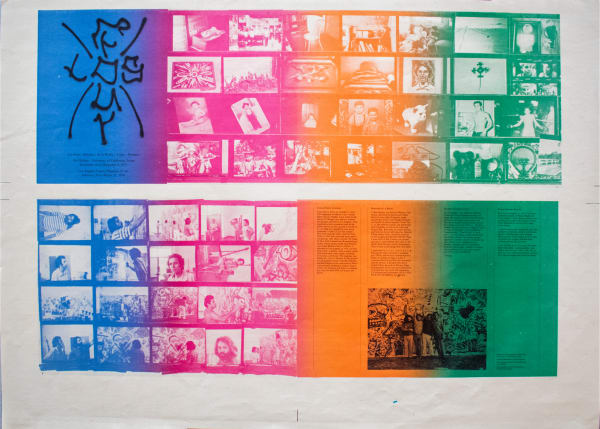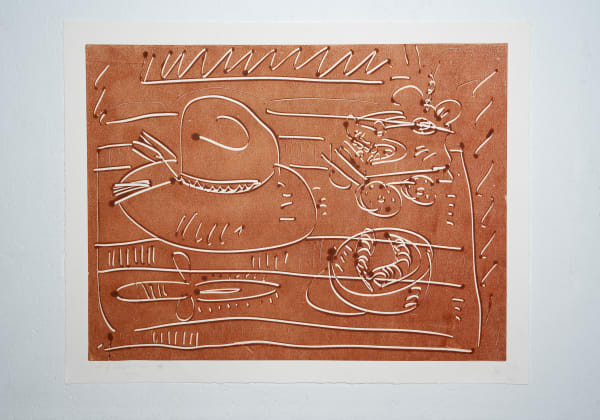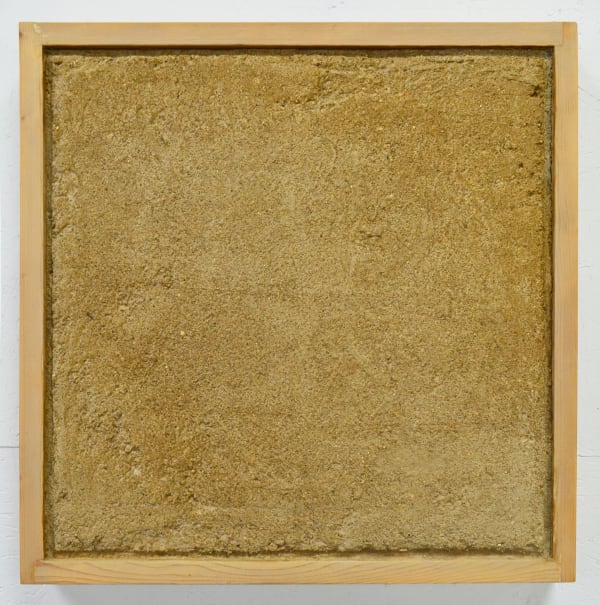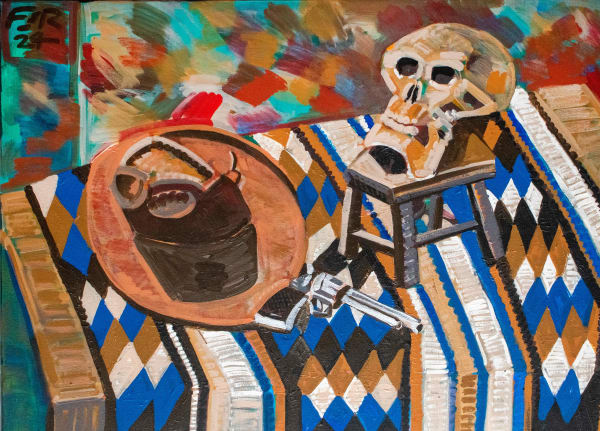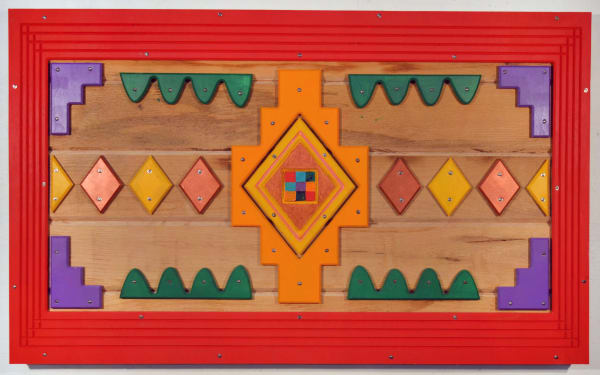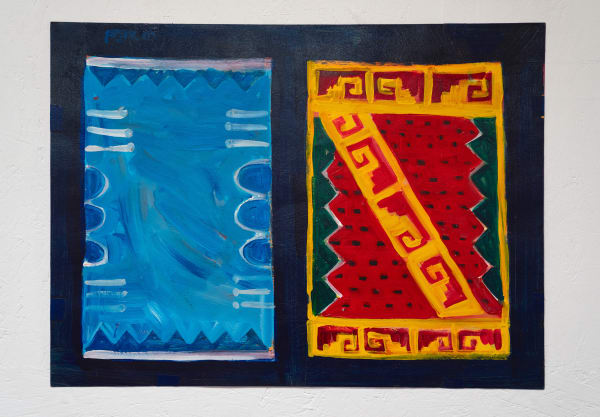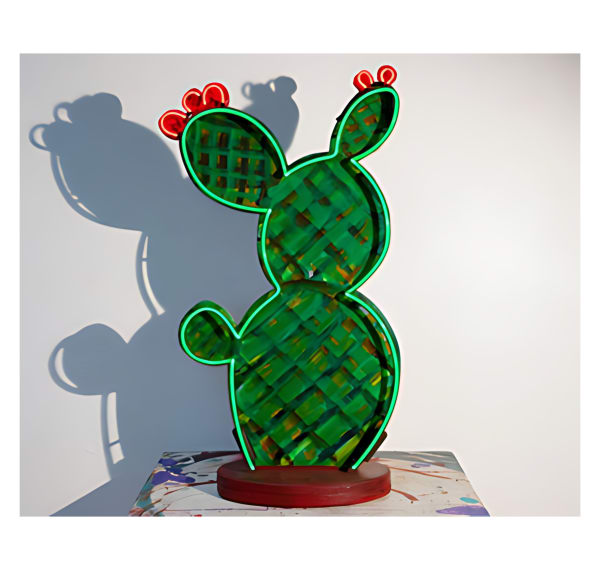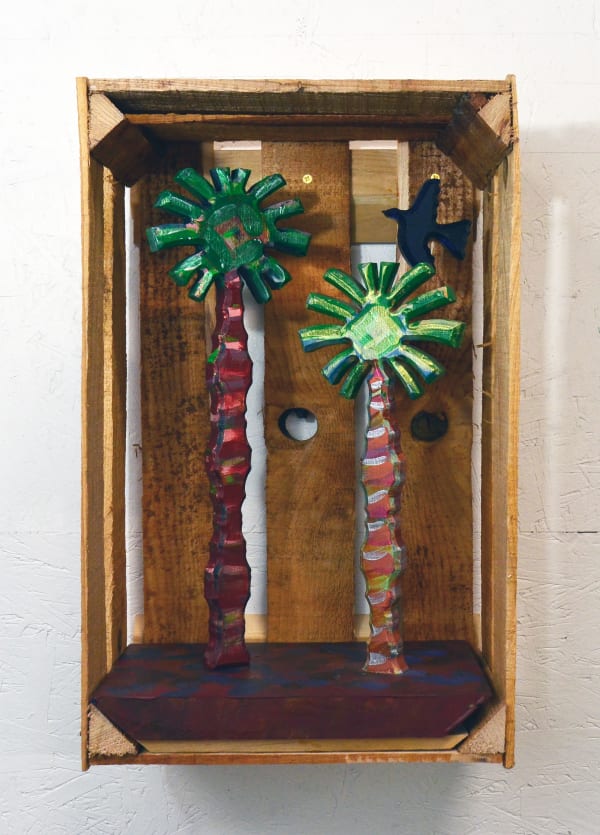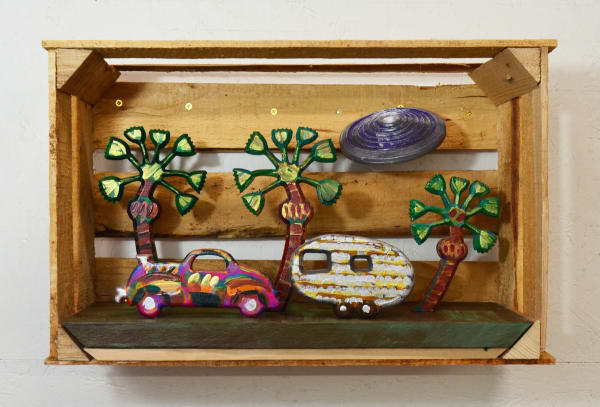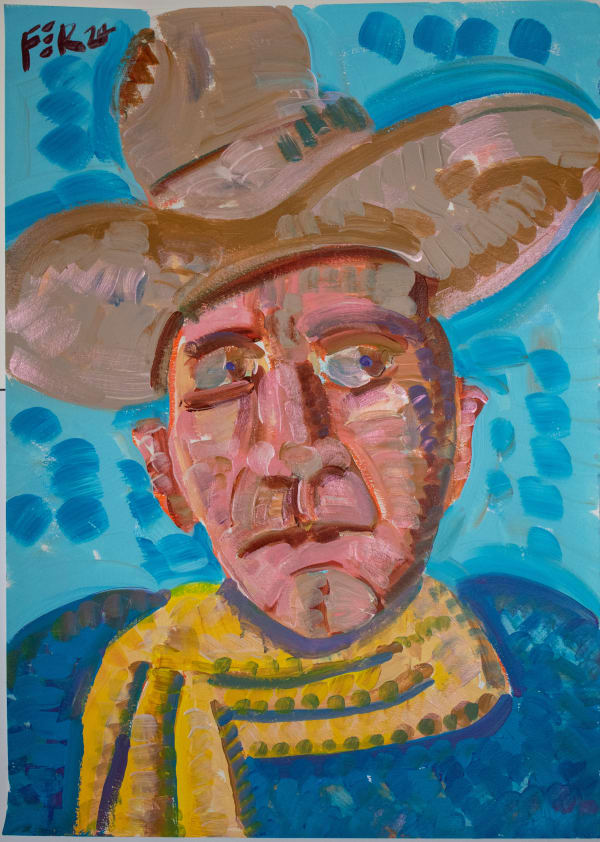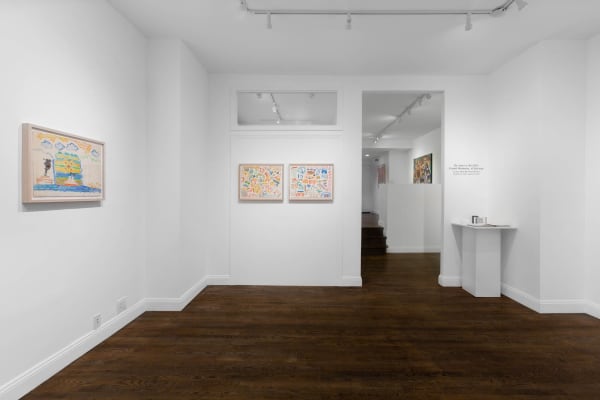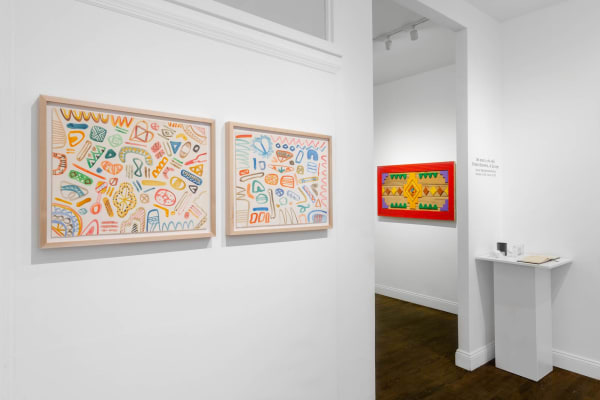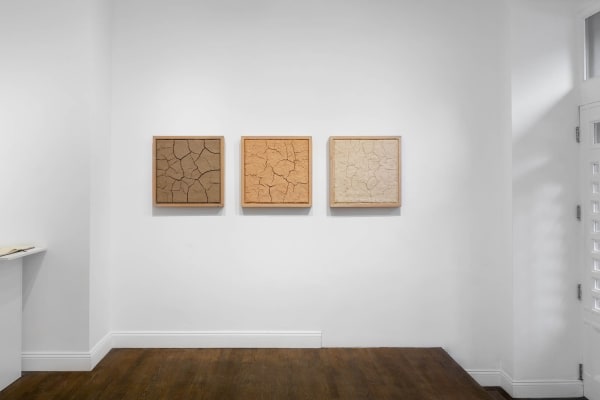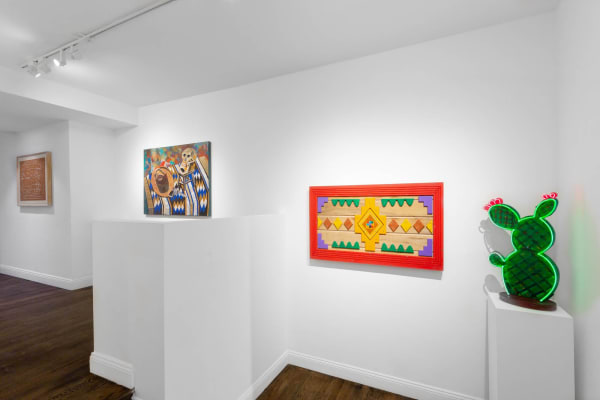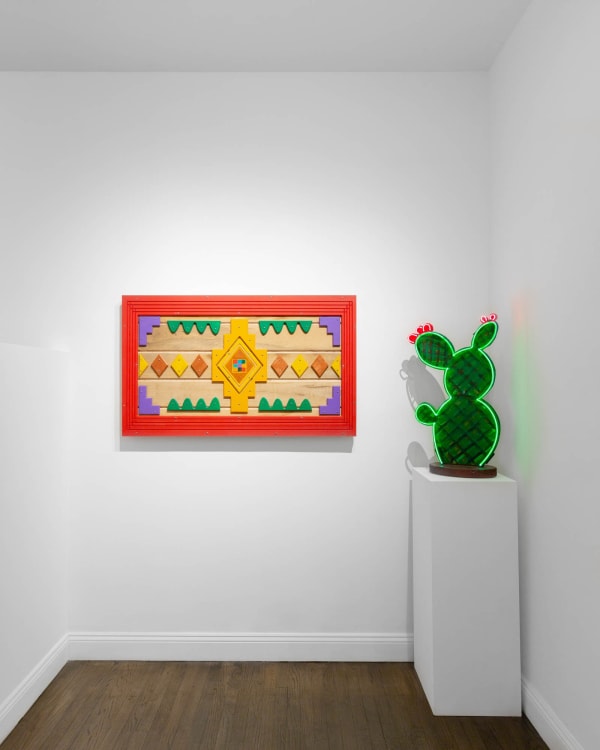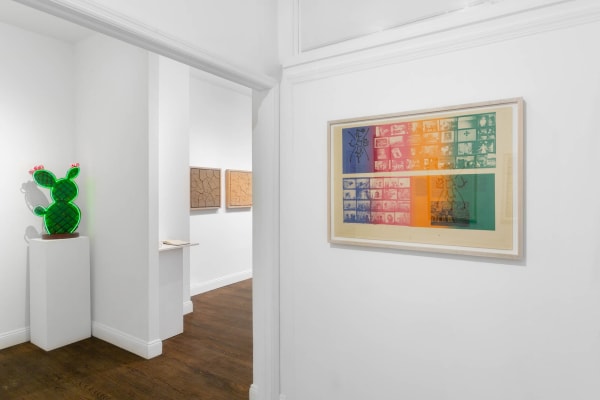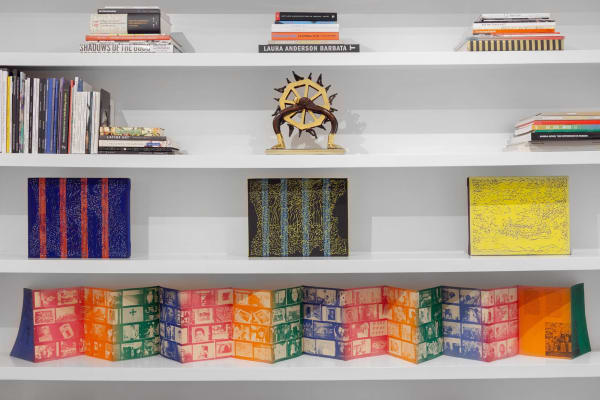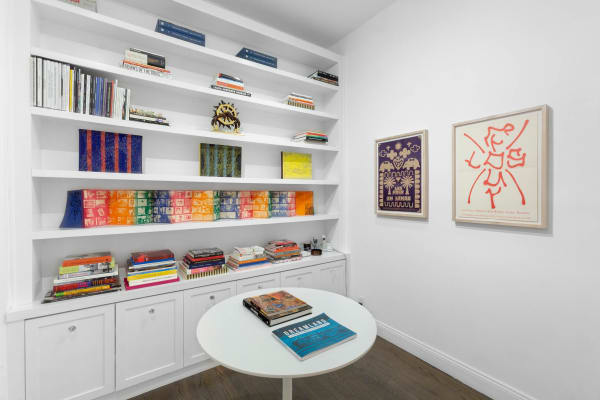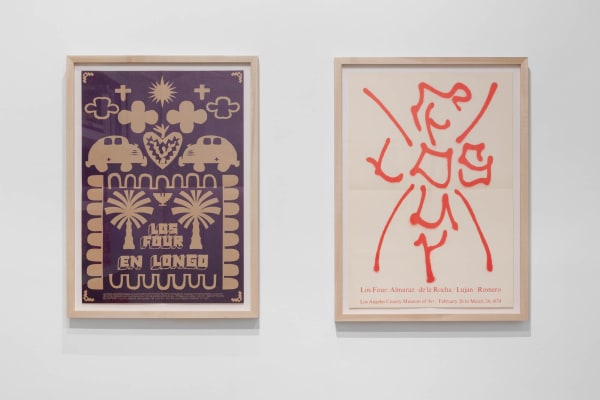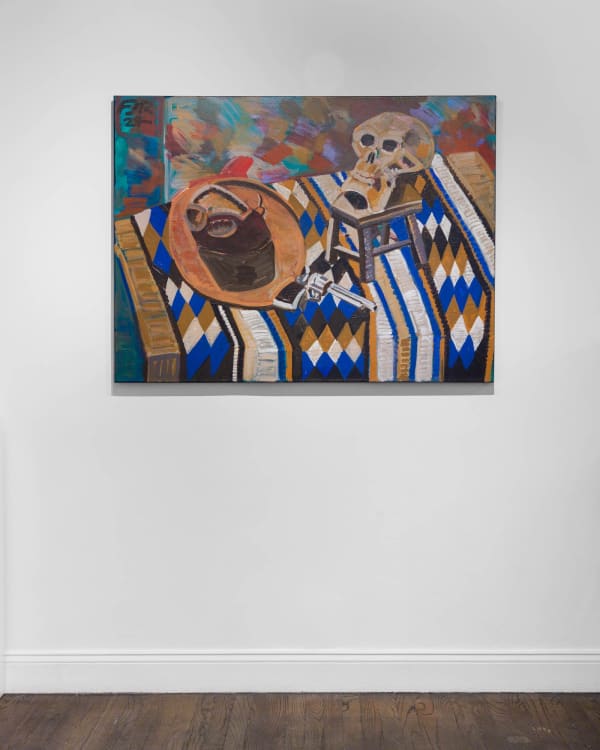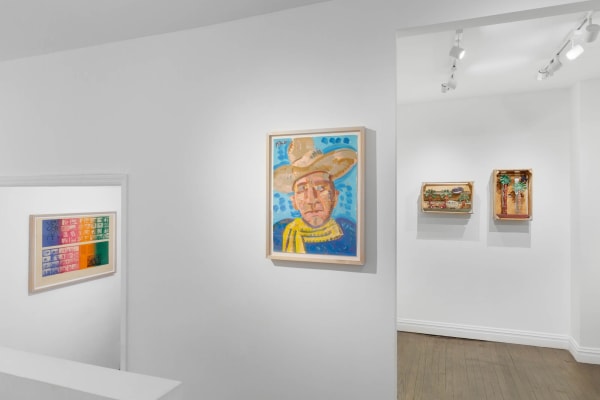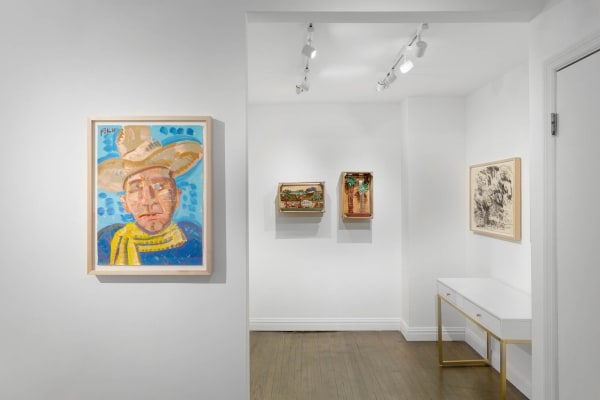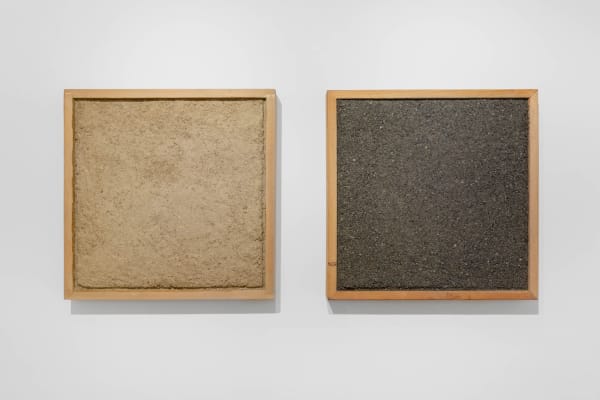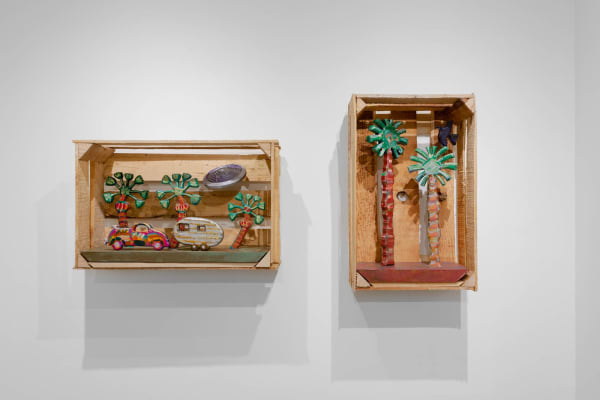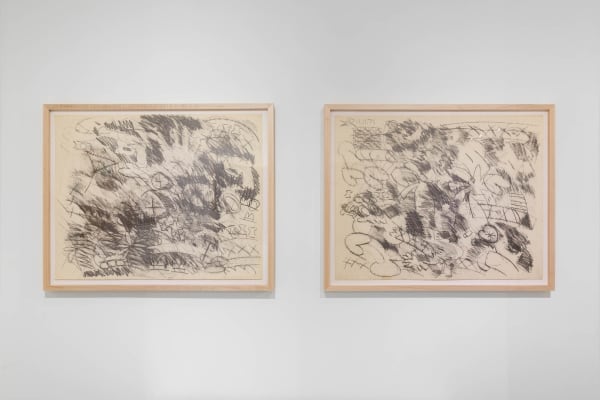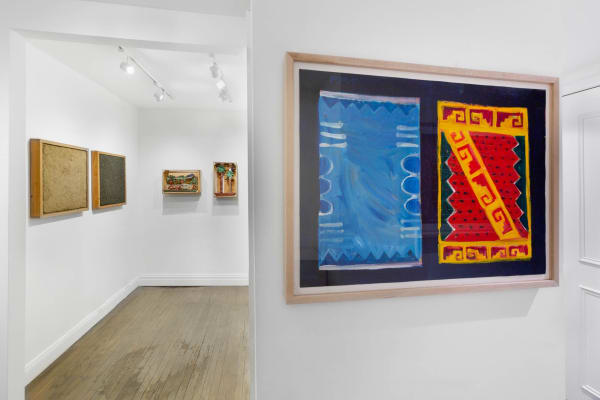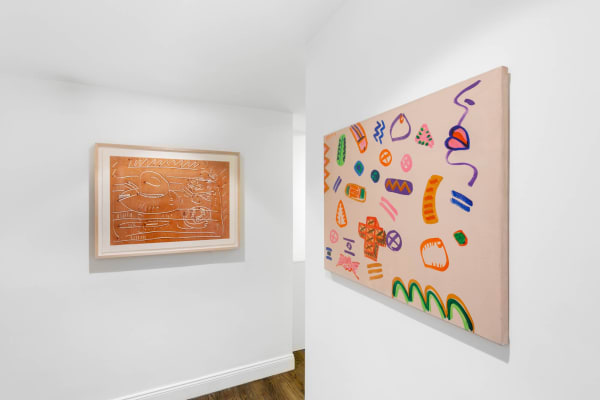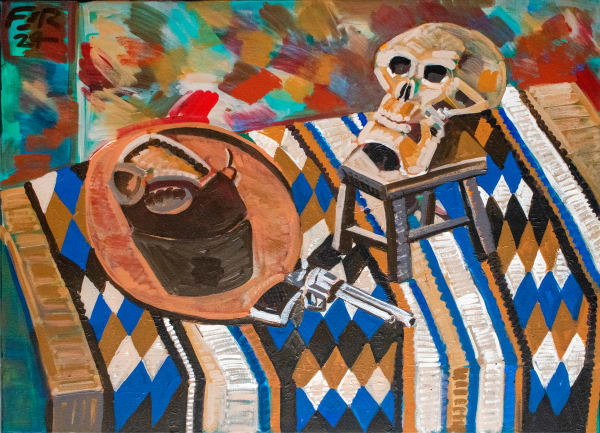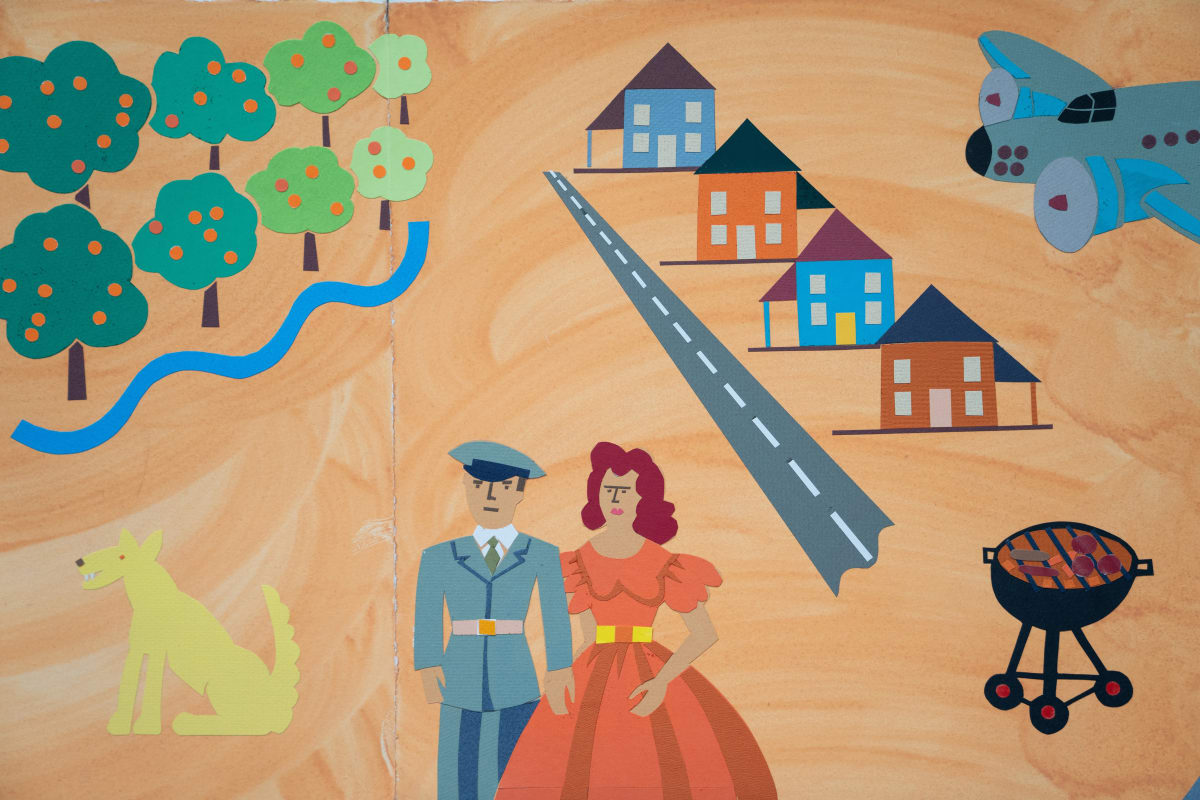De aquí y de allá: Frank Romero, A Survey
Ruiz-Healy Art is pleased to present De aquí y de allá: Frank Romero, A Survey, a concurrent solo exhibition of works by Los Angeles-based artist Frank Romero, curated by Rafael Barrientos Martínez at our New York City and San Antonio galleries. De aquí y de allá: Frank Romero, A Survey will be on view at our New York City gallery from Thursday, November 14th, 2024, to January 31st, 2025. This collection of work unravels the cultural mosaic of Romero’s lived history as a pioneer of the Chicano/a movement, encompassing a variety of visual narratives influenced by his hometown of Los Angeles, California, and his travels across the greater American Southwest. This year marks the 50th anniversary of the influential Chicano art collective Los Four, of which Romero was an original member. The group helped redefine Mexican American artistic expression and bring attention to Chicano art in an institutional setting.
Throughout his over 60-year career as an artist, Frank Romero has been a dedicated contributor to the Los Angeles arts community. As a founding member of the 1970s Chicano art collective, Los Four, Romero and fellow artists Carlos Almaraz, Beto de la Rocha, and Gilbert Luján helped define and promote new Mexican American awareness through murals, publications, and exhibitions at the peak of multiple political movements such as El Movimiento. Los Four's historic 1974 exhibition at the Los Angeles County Museum of Art (LACMA) marked the country's first show of Chicano art at a major art institution. “Within this exhibition, the artists presented collaborative spray-paint paintings, social realist works, ephemeral and large-scale sculptures, and installations referencing home altars or ofrendas filled with personal ephemera, folk art, and everyday items. Overall, this exhibition and its accompanying programming challenged considerations of how we define both Chicana/o art as well as fine art overall, a postcolonial intervention that exposed exclusionary legacies while leaving the door open for those to come,” says Rafael Barrientos Martínez.
Outside of his neighborhood of Boyle Heights in Los Angeles, the artist found a home in Arroyo Seco near Taos, New Mexico, during the 1980s and 1990s with his then-wife, artist Nancy Romero. Surrounded by a community of artists that included Lee Mullican and Luchita Hurtado, Larry Bell, and Ken Price, Romero was catapulted into the world of textiles, ceramics, folk art, wood sculptures, and the overall zeitgeist of the American Southwest. “Having built his own adobe home with the help of members of the Taos Pueblo, Romero would apply lessons taught to him by his new friends to create a series of rarely exhibited earthworks that bridge land and gallery. The Adobe Series exemplifies an important period in his practice where his work becomes intertwined with craft traditions native to regions and towns throughout the greater United States Southwest and Northern Mexico, including ceramics, wool, and wood carving. A voracious collector of Mexican and Indigenous American textiles, these patterned fabrics become the backdrops for Romero’s still-life paintings, evoking a sense of multiculturalism inherent to both his upbringing, the spaces in which he has occupied, and the characters he has met along the way,” explains Rafael Barrientos Martínez.
Romero’s still-life painting, Pistola y Calavera, synthesizes his multifaceted cultural landscapes. Sitting atop a vividly colored Navajo blanket draped over a table is a collection of curated objects that construct a folkloric narrative, including a western hat, a pistol, and a calavera. The decorative calavera, often associated with Dia de los Muertos celebrations, serves as a reminder of the cyclical nature of life and death, the fragility of existence, and the enduring impact of tradition. Romero’s Pistola y Calavera becomes a microcosm of cultural influences, each object contributing a unique layer of meaning. Murals also have played a large role in Romero’s life as an artist. As a key contributor to the 1984 Olympic Arts Festival, the artist was commissioned to paint a large-scale mural titled Going to the Olympics on one of Los Angeles’ busiest freeways (Highway 101). The exhibition features, works from the 1970s, one of his mural studies, his Chicano Iconography series, and black charcoal drawings that include undulating waves, crosses, abstracted figures, and serape design motifs, each building on Romero’s visual vocabulary. Romero’s work invites viewers to explore the intricacies of cultural narratives, commenting on the intersections between heritage, Chicanidad, and region.
-
 Frank RomeroChicano Iconography, 1977Gouache on paper17.625 x 22.75 in
Frank RomeroChicano Iconography, 1977Gouache on paper17.625 x 22.75 in
44.8 x 57.8 cm -
 Frank RomeroIndiana Street Mural, Color Cartoon, Across the L.A. River, 1970Gouache on paper17.375 x 22.5 in
Frank RomeroIndiana Street Mural, Color Cartoon, Across the L.A. River, 1970Gouache on paper17.375 x 22.5 in
44.1 x 57.1 cm -
 Frank RomeroChicano Iconography, 1977Gouache on paper17.625 x 22.75 in
Frank RomeroChicano Iconography, 1977Gouache on paper17.625 x 22.75 in
44.8 x 57.8 cm -
 Frank RomeroUntitled (Black Drawings), 1971Graphite on paper24.6 x 30.6 in
Frank RomeroUntitled (Black Drawings), 1971Graphite on paper24.6 x 30.6 in
62.5 x 77.7 cm -
 Frank RomeroUntitled (Homage to Lee Mullican), 1972Gouache on paper22.125 x 34.375 in
Frank RomeroUntitled (Homage to Lee Mullican), 1972Gouache on paper22.125 x 34.375 in
56.2 x 87.3 cm -
 Frank RomeroUntitled (Black Drawings), 1971Graphite on paper22.625 x 28.625 in
Frank RomeroUntitled (Black Drawings), 1971Graphite on paper22.625 x 28.625 in
57.5 x 72.7 cm -
 Frank RomeroLos Four en Longo, 1974Exhibition poster, Offset lithograph24.75 x 17.25 in
Frank RomeroLos Four en Longo, 1974Exhibition poster, Offset lithograph24.75 x 17.25 in
62.9 x 43.8 cm -
 Frank RomeroLos Four: Almaraz / de la Rocha / Lujan / Romero, 1974Offset lithograph
Frank RomeroLos Four: Almaraz / de la Rocha / Lujan / Romero, 1974Offset lithograph
Produced at the School of Fine Arts, University of California, Irvine
Artist's book designed by Frank Romero
1500 copies printed by Toyo Printing Los Angeles
Photographs are by Frank Romero and Hal Glicksman25 x 35 in
63.5 x 88.9 cmtotal edition of 1500. Printer's proof -
 Frank RomeroLos Four: Almaraz / de la Rocha / Lujan / Romero, 1974Exhibition poster, Offset lithograph25 x 17.5 in
Frank RomeroLos Four: Almaraz / de la Rocha / Lujan / Romero, 1974Exhibition poster, Offset lithograph25 x 17.5 in
63.5 x 44.5 cm -
 Frank RomeroAdobe Series – Tierra negra, 1995/2024Soil, acrylic, chicken wire on wood24 x 24 x 2.5
Frank RomeroAdobe Series – Tierra negra, 1995/2024Soil, acrylic, chicken wire on wood24 x 24 x 2.5
60.9 x 60.9 x 6.3 cm -
 Frank RomeroAdobe series, Tierra ocre oscuro, 1995/2024Soil, acrylic, chicken wire on wood24 x 24 x 2.5
Frank RomeroAdobe series, Tierra ocre oscuro, 1995/2024Soil, acrylic, chicken wire on wood24 x 24 x 2.5
60.9 x 60.9 x 6.3 cm -
 Frank RomeroAdobe Series – Tierra blanca, 1995/2024Soil, acrylic, chicken wire on wood24 x 24 x 2.5
Frank RomeroAdobe Series – Tierra blanca, 1995/2024Soil, acrylic, chicken wire on wood24 x 24 x 2.5
60.9 x 60.9 x 6.3 cm -
 Frank RomeroAdobe Series – Tierra roja, 1995/2024Soil, acrylic, chicken wire on wood24 x 24 x 2.5
Frank RomeroAdobe Series – Tierra roja, 1995/2024Soil, acrylic, chicken wire on wood24 x 24 x 2.5
60.9 x 60.9 x 6.3 cm -
 Frank RomeroPingo and Knife, 1989Silkscreen monoprint (Self-Help Graphics)27.5 x 35.375 in
Frank RomeroPingo and Knife, 1989Silkscreen monoprint (Self-Help Graphics)27.5 x 35.375 in
69.8 x 89.9 cm -
 Frank RomeroAdobe Series – Tierra café claro, 1995/2024Soil, acrylic, chicken wire on wood24 x 24 x 2.5
Frank RomeroAdobe Series – Tierra café claro, 1995/2024Soil, acrylic, chicken wire on wood24 x 24 x 2.5
60.9 x 60.9 x 6.3 cm -
 Frank RomeroPistola y Calavera, 2023-4Acrylic on canvas36 x 48 in
Frank RomeroPistola y Calavera, 2023-4Acrylic on canvas36 x 48 in
91.4 x 121.9 cm -
 Frank RomeroSerape de Madera con Rojo, 2024Acrylic on wood28 x 48 x 2 in
Frank RomeroSerape de Madera con Rojo, 2024Acrylic on wood28 x 48 x 2 in
71.1 x 121.9 x 5.1 cm -
 Frank RomeroPaginas del Libro, 1980Oil on paper22.125 x 29.75 in
Frank RomeroPaginas del Libro, 1980Oil on paper22.125 x 29.75 in
56.2 x 75.6 cm -
 Frank RomeroNopal, 2024Acrylic, neon on wood34 x 22 x 18 in
Frank RomeroNopal, 2024Acrylic, neon on wood34 x 22 x 18 in
86.4 x 55.9 x 45.7 cm -
 Frank RomeroCaja de sombra - Dos Palmas, 2024Acrylic on wood
Frank RomeroCaja de sombra - Dos Palmas, 2024Acrylic on wood
21 x 13 x 9 in
53.3 x 33 x 22.9 cm -
 Frank RomeroCaja de sombra - Roswell, Nuevo Mexico, 2024Acrylic on wood13 x 21 x 9 in
Frank RomeroCaja de sombra - Roswell, Nuevo Mexico, 2024Acrylic on wood13 x 21 x 9 in
33 x 53.3 x 22.9 cm -
 Frank RomeroCowboy, 2024Acrylic on paper24 x 18 in
Frank RomeroCowboy, 2024Acrylic on paper24 x 18 in
61 x 45.7 cm -
 Frank RomeroLos Four: Almaraz / de la Rocha / Lujan / Romero, 1974Artist's Book designed by Frank Romero
Frank RomeroLos Four: Almaraz / de la Rocha / Lujan / Romero, 1974Artist's Book designed by Frank Romero
Produced at the School of Fine Arts, University of California, Irvine
1500 copies printed by Toyo Printing Los Angeles
Photographs are by Frank Romero and Hal GlicksmanFirst Edition 1500. One continuous 10 x 118" sheet printed recto only
-
 Installation images by Daniel Terna
Installation images by Daniel Terna -
 Installation images by Daniel Terna
Installation images by Daniel Terna -
 Installation images by Daniel Terna
Installation images by Daniel Terna -
 Installation images by Daniel Terna
Installation images by Daniel Terna
-
 Installation images by Daniel Terna
Installation images by Daniel Terna -
 Installation images by Daniel Terna
Installation images by Daniel Terna -
 Installation images by Daniel Terna
Installation images by Daniel Terna -
 Installation images by Daniel Terna
Installation images by Daniel Terna
-
 Installation images by Daniel Terna
Installation images by Daniel Terna -
 Installation images by Daniel Terna
Installation images by Daniel Terna -
 Installation images by Daniel Terna
Installation images by Daniel Terna -
 Installation images by Daniel Terna
Installation images by Daniel Terna
-
 Installation images by Daniel Terna
Installation images by Daniel Terna -
 Installation images by Daniel Terna
Installation images by Daniel Terna -
 Installation images by Daniel Terna
Installation images by Daniel Terna -
 Installation images by Daniel Terna
Installation images by Daniel Terna
-
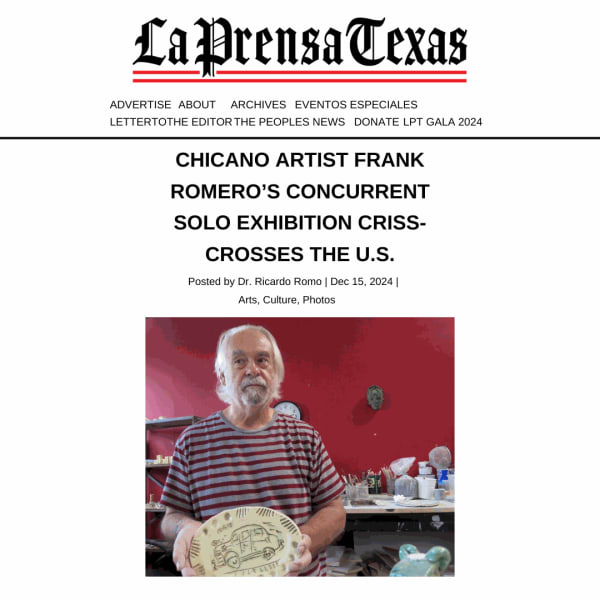
Chicano Artist Frank Romero’s Concurrent Solo Exhibition Criss-Crosses The U.S.
Dr. Ricardo Romo, La Prensa Texas, December 15, 2024 -

De aquí y de allá: Frank Romero, A Survey
14 Nov 2024 — 31 Jan 2025, Ruiz-Healy Art New YorkMeer, December 11, 2024 -

Chicano Artist Frank Romero’s Concurrent Solo Exhibition Criss-Crosses The U.S.
Dr. Ricardo Romo, Latinos in America : Substack, December 11, 2024 -
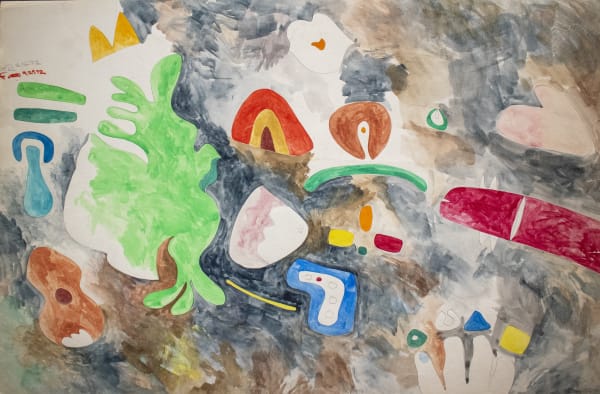
De aquí y de allá: Frank Romero, A Survey
14 Nov 2024 — 31 Jan 2025, Ruiz-Healy Art New YorkMeer, November 20, 2024

